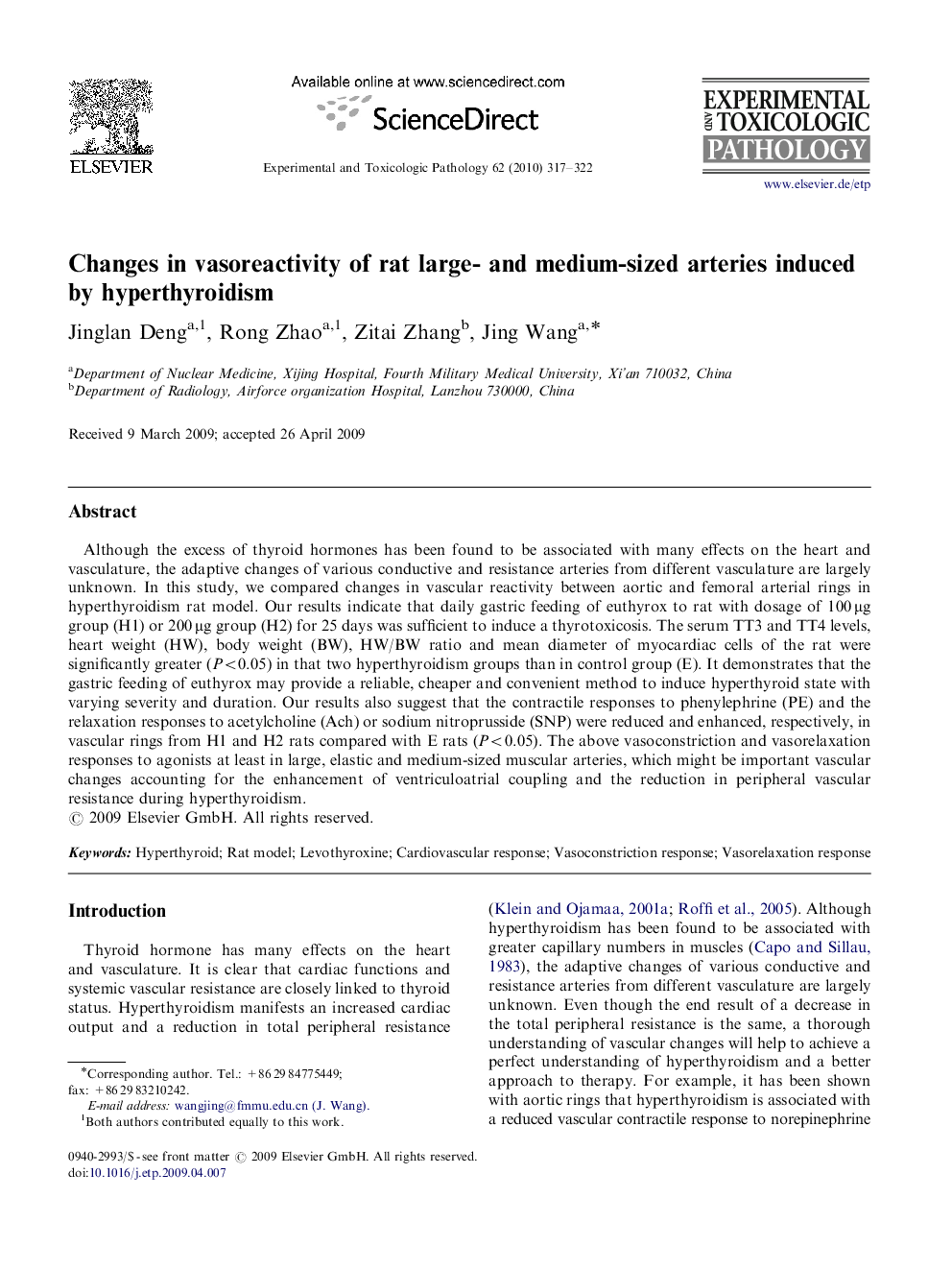| Article ID | Journal | Published Year | Pages | File Type |
|---|---|---|---|---|
| 2499019 | Experimental and Toxicologic Pathology | 2010 | 6 Pages |
Although the excess of thyroid hormones has been found to be associated with many effects on the heart and vasculature, the adaptive changes of various conductive and resistance arteries from different vasculature are largely unknown. In this study, we compared changes in vascular reactivity between aortic and femoral arterial rings in hyperthyroidism rat model. Our results indicate that daily gastric feeding of euthyrox to rat with dosage of 100 μg group (H1) or 200 μg group (H2) for 25 days was sufficient to induce a thyrotoxicosis. The serum TT3 and TT4 levels, heart weight (HW), body weight (BW), HW/BW ratio and mean diameter of myocardiac cells of the rat were significantly greater (P<0.05) in that two hyperthyroidism groups than in control group (E). It demonstrates that the gastric feeding of euthyrox may provide a reliable, cheaper and convenient method to induce hyperthyroid state with varying severity and duration. Our results also suggest that the contractile responses to phenylephrine (PE) and the relaxation responses to acetylcholine (Ach) or sodium nitroprusside (SNP) were reduced and enhanced, respectively, in vascular rings from H1 and H2 rats compared with E rats (P<0.05). The above vasoconstriction and vasorelaxation responses to agonists at least in large, elastic and medium-sized muscular arteries, which might be important vascular changes accounting for the enhancement of ventriculoatrial coupling and the reduction in peripheral vascular resistance during hyperthyroidism.
